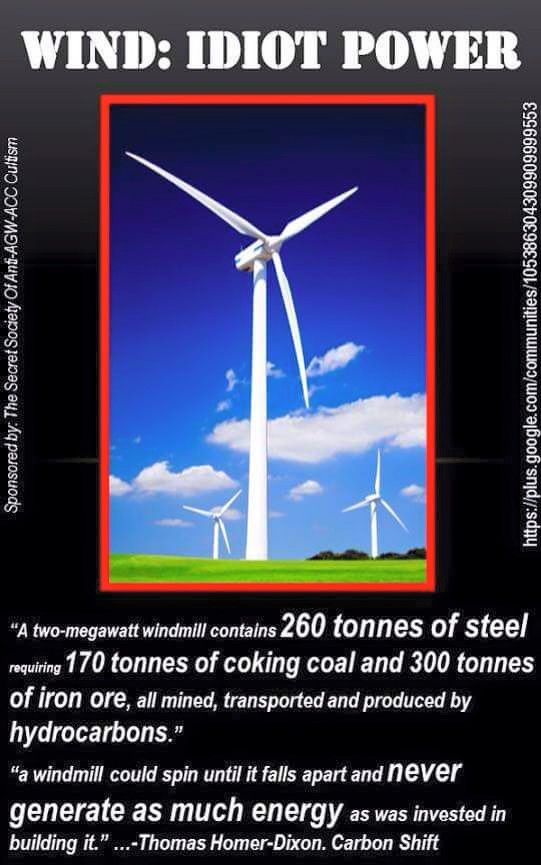No . . . I did not say wind energy is ‘Idiot Power’
A poster widely circulated on the Web highlights text that was purportedly written by me saying that wind power inevitably suffers an energetic deficit. The poster is fraudulent. I didn’t write the text, the text itself is selectively quoted, and the argument it makes, taken in isolation, is meaningless.
The poster includes the following text over my name:
“A two-megawatt windmill contains 260 tonnes of steel requiring 170 tonnes of coking coal and 300 tonnes of iron ore, all mined, transported and produced by hydrocarbons” “a windmill could spin until it falls apart and never generate as much energy as was invested in building it”
This text is selectively excerpted from a chapter written by David Hughes in Carbon Shift (2009), a book I co-edited. Here’s the full text (the words omitted on the circulated poster are enclosed in square brackets):
“[The concept of net energy must also be applied to renewable sources of energy, such as windmills and photovoltaics.] A two-megawatt windmill contains 260 tonnes of steel requiring 170 tonnes of coking coal and 300 tonnes of iron ore, all mined, transported and produced by hydrocarbons. [The question is: how long must a windmill generate energy before it creates more energy than it took to build it? At a good wind site, the energy payback day could be in three years or less; in a poor location, energy payback may be never. That is,] a windmill could spin until it falls apart and never generate as much energy as was invested in building it.”
It’s worth noting that it would be pointless to put wind turbines in poor locations, and it’s trivial, or meaningless, to say that a turbine would never pay back its embedded energy in a poor location.
So, 1) I didn’t write the text, 2) the text itself is selectively quoted, and 3) the argument it makes, taken in isolation, is meaningless. Three strikes.

Topics
Climate Change
Energy
